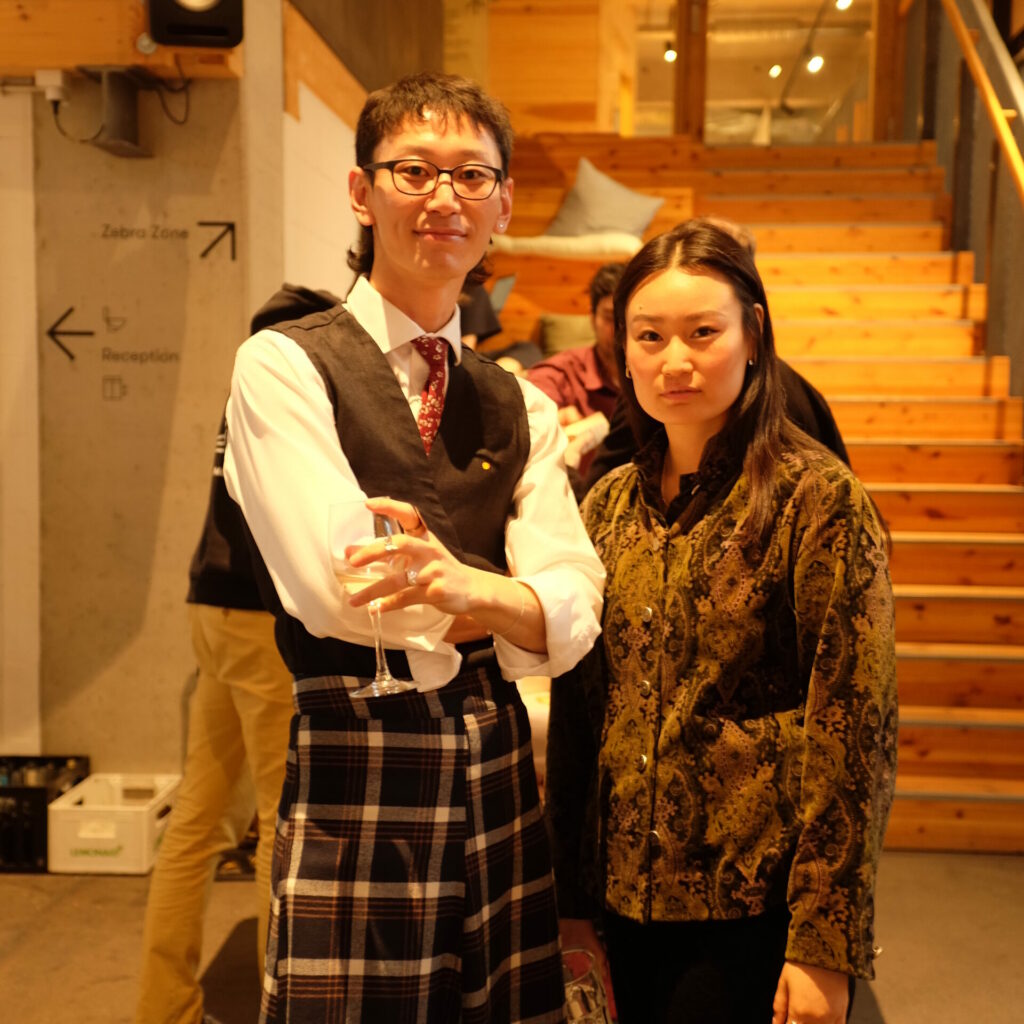How to host a successful clothes swap
Hosting a clothing swap is a fun and sustainable way to give clothes a second life! Learn from our experience at the showcase event for the Climate Action Accelerator: Fashion Forward cohort and start planning your own.
The fashion industry is a major environmental polluter, and textile waste is one of its most harmful byproducts. Shockingly, textile production is estimated to be responsible for about 20% of global clean water pollution from dyeing and finishing products.
On top of that, textile consumption in the European Union produces an estimated 270 kilograms of CO₂ emissions per person. Altogether, this means that the EU is emitting a staggering 121 million tonnes per year of greenhouse gases.
We know it can be difficult to really grasp these abstract numbers – so here’s those numbers in context:
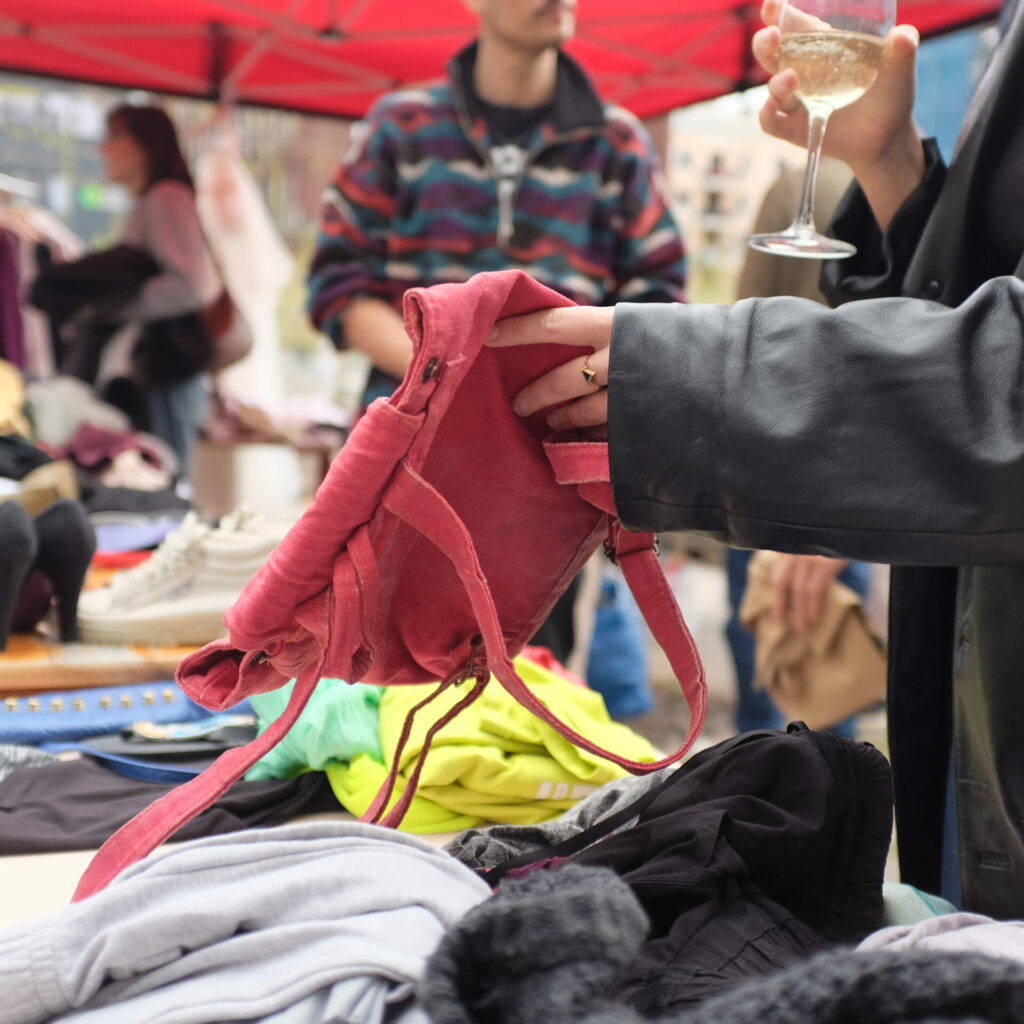
270 kilograms of CO₂ is equivalent to:
- Using a clothes dryer for about 270 hours.
- Charging a smartphone over 34,000 times.
- Running a laptop non-stop for over 1.5 years.
- Watching TV continuously for around 2,000 hours on an average LCD screen.
- Eating 27 kg of beef, since beef production is especially carbon-intensive (about 10 kg CO₂ per 1 kg of beef).

Synthetic fibers such as polyester, which are derived from fossil fuels, dominate the textile industry, accounting for approximately 57% of global fiber production as of 2023. These materials are not biodegradable and can persist in the environment for centuries. During their lifecycle, especially through washing and wear, they release microplastic fibers into water systems, contributing significantly to marine pollution. In fact, synthetic textiles are estimated to be responsible for 35% of primary microplastics released into the oceans. These microplastics pose risks to aquatic life and can enter the human food chain, raising concerns about potential health impacts.
Not only does the production of clothes have a huge environmental impact but the volume of textiles discarded globally is staggering: every second, the equivalent of one garbage truck of textiles is landfilled or burned. In fact, less than 1% of clothes are recycled into new clothing, meaning nearly all garments are either dumped or burned, contributing massively to greenhouse gas emissions and toxic chemical pollution.
Given these figures, it’s clear that reducing textile consumption and waste is critical for mitigating environmental harm. One way is organizing clothes swaps which is an initiative that not only diverts clothing from landfills but also encourages mindful consumption, finding your new favourite magic fits for free and meeting like-minded people.
By extending the lifespan of garments through second, third, forth… hand use, we can significantly lower the demand for new production, thus cutting down emissions, water use, and chemical pollution.
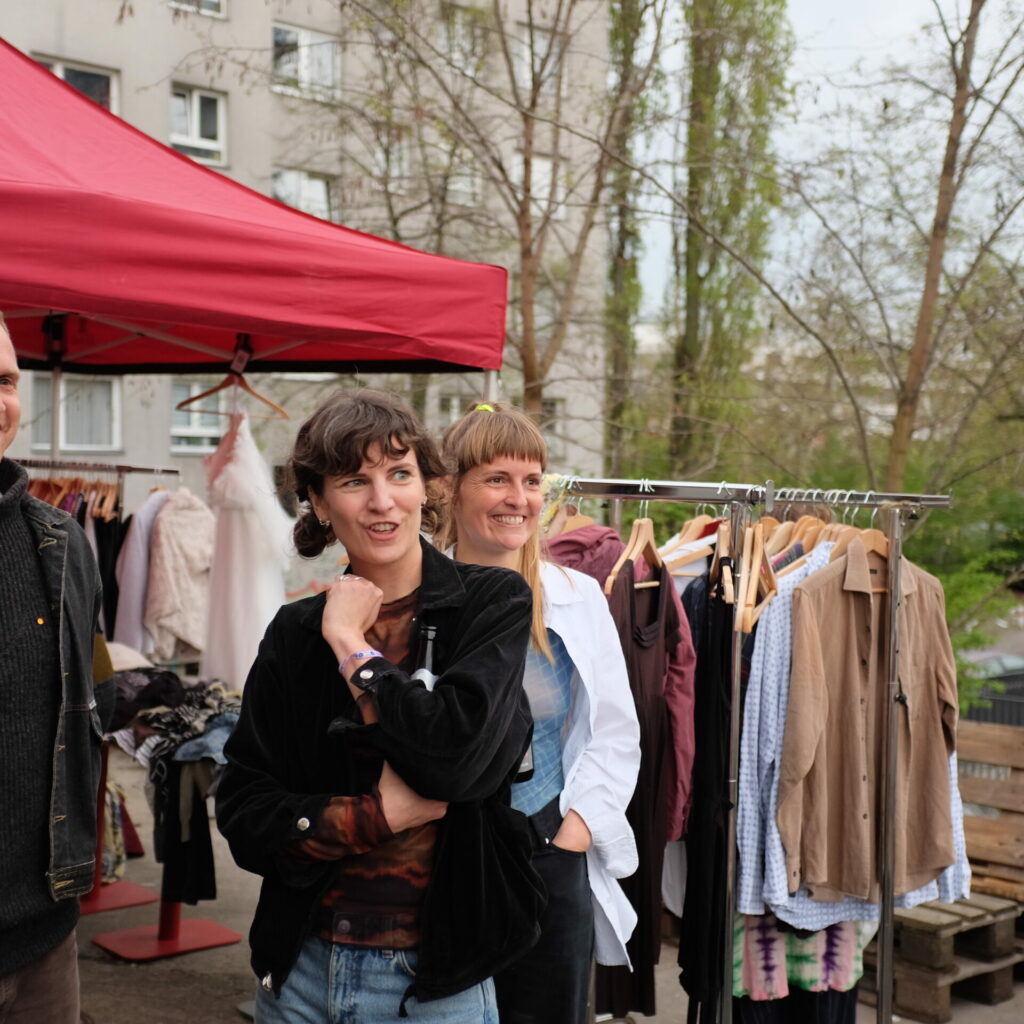
During our recent clothing swap at the Climate Action Accelerator showcase at Impact Hub Berlin, we saw firsthand how fun, engaging, and impactful such events can be.
Participants exchanged hundreds of garments, gave their clothes a second life, and discussed sustainable fashion choices, all without consuming any new resources!
Here’s what we learned and how you can host your own.
Clothes swapping events highlight the role that small, community-led actions can play in solving big environmental challenges.
Planning Your Swap: Set the Ground Rules Early
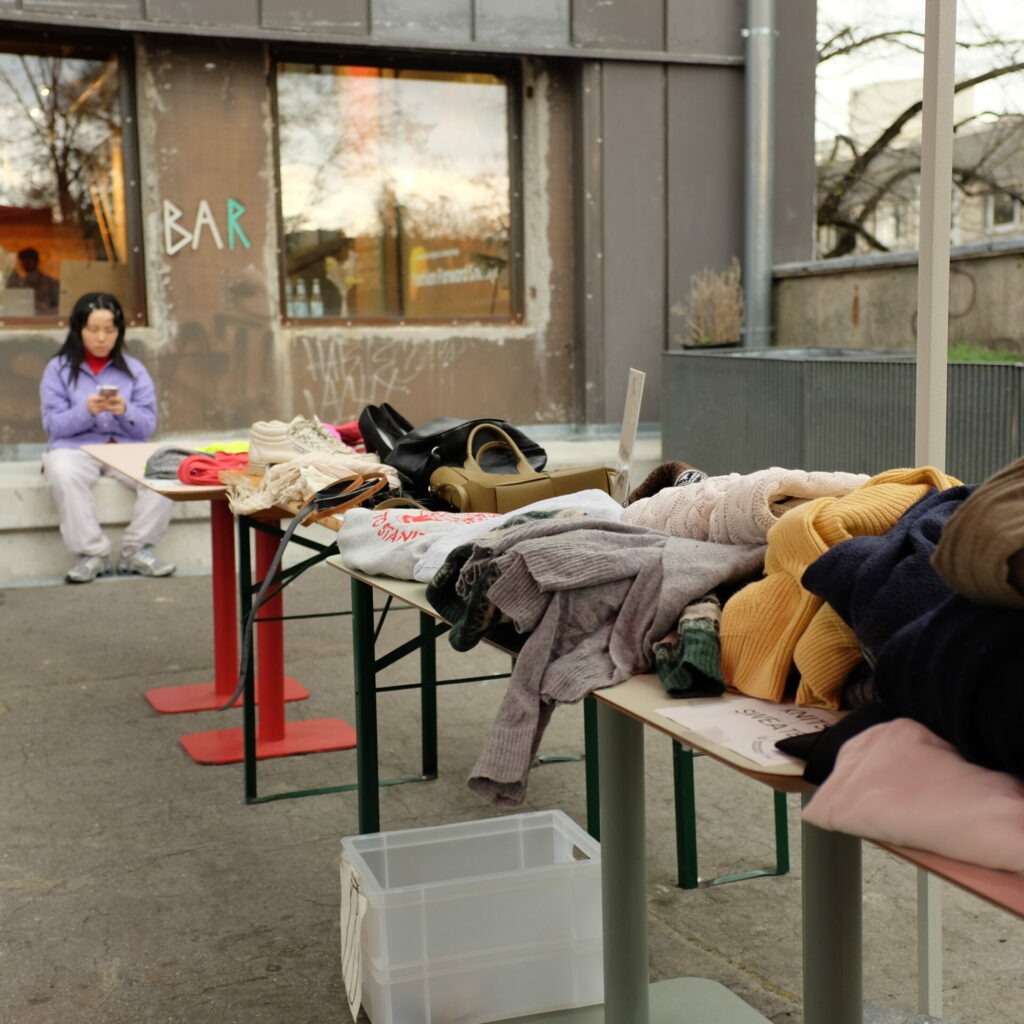
What is your scope? Who do you expect to be there?
Before your event, set clear guidelines about what participants should (and shouldn’t) bring. Here it is important to mention that the shoulds and the shouldn’ts could be event-specific.
For instance, if you are organizing a children’s clothing swap, you would focus only on children’s clothes, shoes, and toys, whereas lingerie and adult clothing would not be appropriate. If you are hosting an accessory swap, you might encourage items like bags, scarves, hats, belts, and costume jewelry, while asking participants not to bring any clothing or footwear. But in any case, one thing is very important: the items should be clean and intact. You might want to clearly state that bringing damaged, dirty, or overly worn clothes is not possible.
Pro tip: Using the word “pre-loved” is a good way to highlight the type of clothing that can be brought.
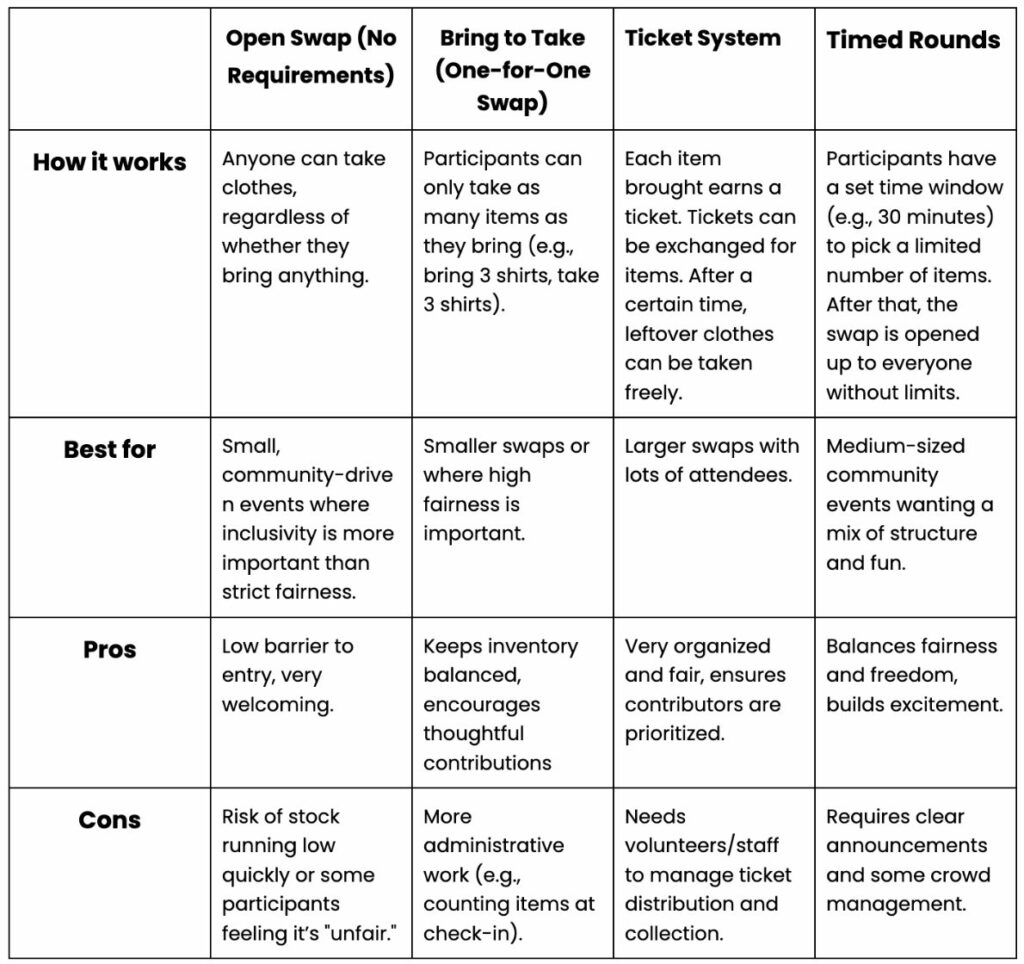
Do you want everyone to participate?
There are several different ways to manage participation at clothing swaps, depending on the size of the event, your goals (fairness, accessibility, simplicity), and the ✨ vibe ✨ you want to create.
Here are common participation models that you might want to consider. 👉
Set Up for Success: How We Did It

We used a spacious venue perfect for setting up tables, coat racks, and even a small changing room.
👚 We divided clothes into clear sections such as; Tops & T-shirts, Hoodies, Jeans & Pants etc. We also recommend having an area for miscellaneous items!
👚 Assigned volunteers to monitor and maintain order at each table.
👚 Brought clothing racks and hangers for jackets, coats, and heavier items.
👚 Used a side room for quick changing! Having a (full length) mirror nearby can help participants find their perfect match.
👚 Used a timed round: Participants could take up to 5 items in the first 30 minutes.
👚 Free-for-all afterwards: After the first round, everyone was free to pick up any leftover items.
Pro tip: Encourage participants to bring extra tote bags to carry their newly found treasures!
Pro tip: Check the weather! Wind and rain can disrupt your clothes swap if you’re not prepared.
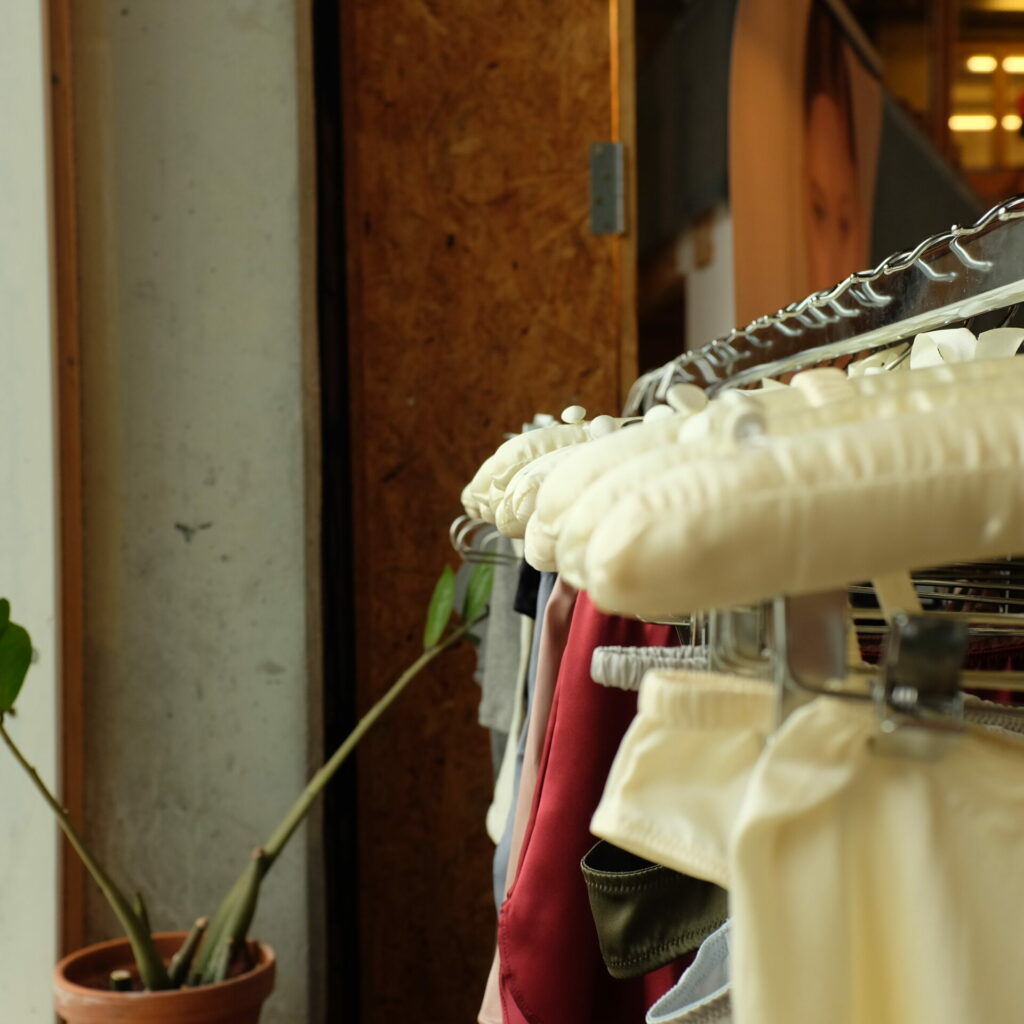
Bonus: Think About Leftovers
Sometimes people bring clothes to clothing swaps and do not necessarily want them back, if they are not taken. So bear in mind that not every piece will find a new home during the event. In these cases donating the clothes is a good alternative, for the clothes not to be wasted and find their home when they are presented to a larger audience!
At our swap, leftover clothes were donated to GFS Spendenwarenhaus Neukölln.
Pro tip: Proactively communicate to participants that anything left behind will be donated.
Hosting a clothing swap is more than just a fun, social event, it’s a powerful act of climate action. By coming together as a community, we can reduce textile waste, extend the life of our clothes, and promote a culture of conscious consumption. Whether you’re planning a small neighborhood gathering or a large-scale event like our swap at the Climate Action Accelerator Pitch Night, every item exchanged is a step toward a more sustainable future.
Ready to get involved? Check out Impact Hub Berlin’s Membership to join a community of changemakers, or explore upcoming opportunities on our Events page. If you’re a founder of an early-stage climate startup, consider applying to the next cohort of the Climate Action Accelerator and take your impact to the next level.
Together, we can make circular fashion the norm, one swap at a time.

